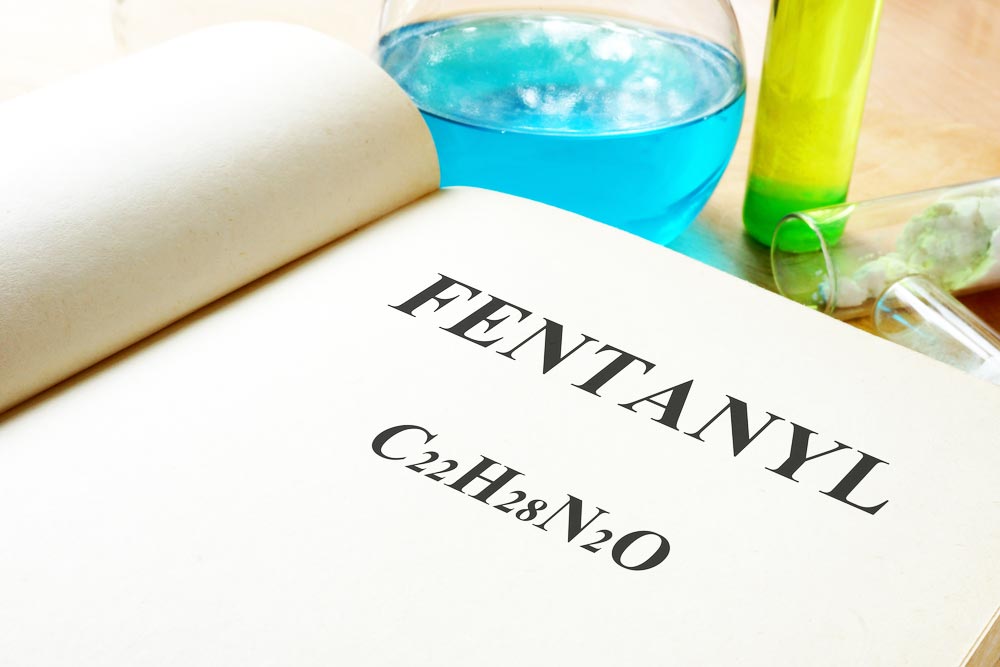Ocean Ridge Treatment & Recovery
Detox, Treatment, Recovery

Fentanyl is one of the strongest prescription painkillers on the market and also one of the most dangerous. While synthesized in 1963 as a safer alternative to morphine, the drug is as much as 100 times more potent than the drug it was intended to replace. Today, it’s leading the opioid epidemic, and is found in everything from straight fentanyl, cut heroin where it’s used to make poor quality drugs stronger, and even used in the manufacture of counterfeit OxyContin and Xanax. As a result, over 3 million people are exposed to recreational Fentanyl use – despite the extreme danger of the drug. While fentanyl is estimated to be responsible for around 70% of all opioid-related overdoses, it’s also an essential medication, and in the top 300 of most prescribed medications.
Whether you or a loved one is dealing with fentanyl withdrawal after having a prescription following surgery, have been using recreationally, or have been using drugs that weren’t supposed to be fentanyl, it’s important to understand those withdrawal symptoms to get through them safely.
In most cases, people start to experience fentanyl withdrawal symptoms between 6 and 12 hours after the final dose. If you’re taking prescription medication and have a slow-release formulation, symptoms may take as long as 24-48 hours to kick in.
However, these symptoms always appear much like a cold or flu. They start out relatively light and increase over the course of a few days – after which they plateau. In most cases, people experience sleepiness, cramping, muscle pain, and cravings.
Nausea and possibly vomiting and constipation
Slurred or slowed speech
Cravings
Abdominal pain
Agitation and irritability
Shaking or tremors
Cold and flu symptoms
Sleepiness or lethargy
In most cases, these symptoms are not life threatening. However, many individuals do experience dehydration, so it’s important to ensure that you drink enough water. In addition, it’s important to monitor someone trying to detox, because people who quit for a few days and suddenly take more of a drug have often reduced their tolerance and are vulnerable to overdose.

Our medical, clinical, and counseling staffs on site are available 24/7.
Withdrawing from fentanyl normally takes about two weeks without medical management of symptoms. Here, you can normally expect symptoms to start within about 6-12 hours, to peak after 3-4 days, and to fade for the next few weeks.
If you go to a rehab center and are given a medication assisted program (MAT) with buprenorphine or a similar prescription medication, these symptoms won’t occur. Otherwise, you can expect the following fentanyl withdrawal timelines.
Early Onset – The first few hours of fentanyl withdrawal are usually marked with light anxiety and cravings. Someone who knows they are quitting may increase anxiety because they expect to feel bad later. Providing emotional support and ensuring self-care happens is a good idea. Here, light exercise, bathing, and drinking and eating normally will help to relieve symptoms.

Day 1-4 – Symptoms normally start to exacerbate after the first 24-36 hours. In most cases, withdrawal will feel like having a bad flu. You’ll have a fever, chills, sweating, runny nose, possibly even a cough. Most people experience stomach upset and vomiting or diarrhea. It’s important to counter this with good water intake, because dehydration will make you feel worse and can be dangerous. You might feel very emotional, overwhelmed with feeling low, and experience intense cravings. It’s important to get good emotional support. In addition, many people experience breathing difficulties, muscle spasms, and tremors, this can be dangerous so it’s a good idea to have medical checkups.
Day 5-14 – Symptoms normally start to go down after about the first 5 days, however, in some, they may remain steady for around 14. However, they will go down. Physical symptoms will gradually fade away and most people will start to gradually feel better. After about 15-20 days, most people will have physically recovered from fentanyl withdrawal – meaning that the substance no longer impacts your body. However, mental and behavioral side-effects will last for significantly longer.

Detox or detoxification is the process of medically managing withdrawal symptoms to reduce them, to ensure the individual stays healthy, and to offer the psychological and emotional support necessary to move through withdrawal without additional trauma.
Here, detox can range from 24/7 medical monitoring with social detox to medically assisted detox. The latter is extremely common with opioids, because opioid withdrawal and cravings can be significant, and cravings often interfere with early treatment for substance use disorders.
Both of these options are part of longer-term maintenance programs, which can extend for up to several years. Here, you commit to taking medication to prevent withdrawal symptoms and cravings so you can focus on building a life without drugs.
If you or a loved one is using fentanyl recreationally, it’s a good sign that you need more than physical detox. While withdrawal will remove the physical dependence and physical cravings, it does nothing about behavioral seeking patterns, which push people to use drugs, even when they know they’re bad for them. Today, we know that these sorts of behavioral disorders are treatable with counseling, behavioral therapy, and by building skills, coping mechanisms, and the basis for a good life. Treatment can help and detox is just the first step.
Fentanyl is extremely strong, often illicitly manufactured and sold, and available with little oversight. It’s extremely addictive, dangerous to withdraw from, and an even more significant health risk once you quit – because relapse can mean overdose. For that reason, treatment, behavioral help, and a medication assisted program are often the best way to go to ensure long-term safety when quitting the drug.
If you or a loved one would like more information about drug rehab, alcohol rehab, detox please contact us to speak in complete confidence with one of our experienced treatment advisors today.